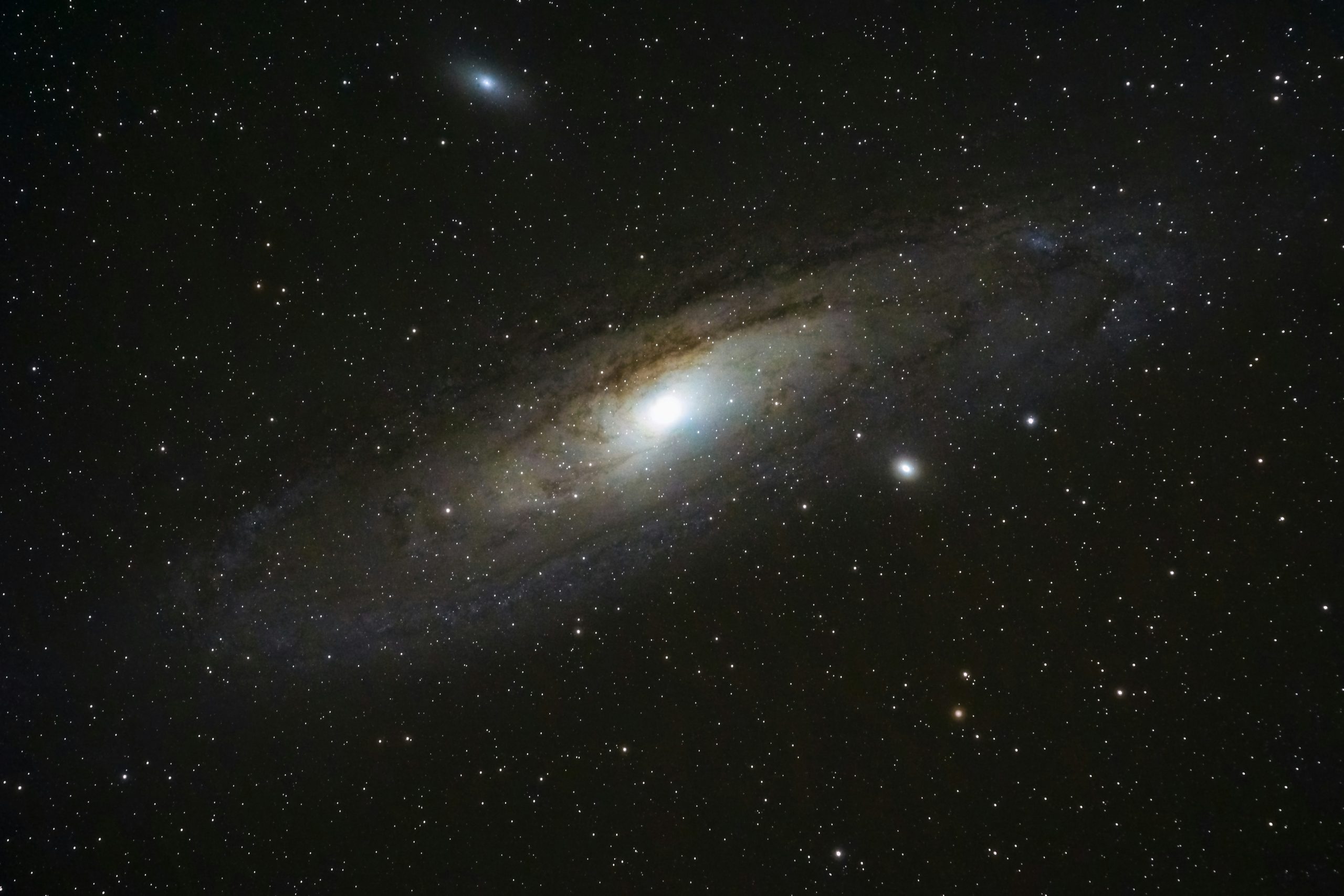Norse Mythology: The World Tree Yggdrasil

Hey there, amazing readers! 🖐️ Just a quick note: yes, we know there are a lot of ads here. Trust us, we get it—it’s not the prettiest look, but they help us keep this blog alive and kicking. Those pesky little ads cover the costs of all the behind-the-scenes magic, from hosting and tech stuff to creating content we hope you’ll love.
We’re committed to delivering quality posts, and your support (even just sticking around despite the ads) means everything to us. So, bear with us, and thanks for helping us keep the good vibes rolling. Now, on to the fun stuff! 😉
TRANSLATE BUTTON AT THE END OF THE ARTICLE
A Quick Overview
Yggdrasil, the World Tree of Norse mythology, stands as one of the most captivating symbols of life, interconnectedness, and the cosmos.
This majestic tree connects various realms and beings, creating a rich tapestry of stories and beliefs.
As we delve into the wonders of Yggdrasil, we’ll explore its significance, the creatures that inhabit it, and how it continues to resonate in our modern lives.
So grab a cup of coffee, and let’s embark on this mythical journey together!
Exploring the Wonders of Yggdrasil: The World Tree
Imagine a tree so enormous that it touches the heavens and reaches deep into the underworld.
Yggdrasil is that tree!
It’s far more than just a botanical wonder; it’s a centerpiece of Norse cosmology.
This great tree symbolizes the universe itself, binding together nine distinct realms, each with its unique inhabitants and stories.
The tree’s branches stretch into the sky, while its roots delve deep into different worlds.
Norse mythology depicts Yggdrasil as a vibrant entity, teeming with life yet facing constant threats.
The tree embodies the cycles of life, death, and rebirth, showcasing nature’s resilience.
It’s fascinating to think about its role in ancient Norse culture.
The tree was a meeting ground for gods, humans, and other beings.
It served as a reminder of how everything is interconnected.
What’s even more interesting is how Yggdrasil has inspired countless tales, art, and even modern storytelling.
The image of Yggdrasil is so powerful that it pops up in various forms today.
From tattoos to illustrations, it speaks to themes of connectivity and nature.
This tree is not just a relic of ancient beliefs; it continues to inspire and provoke thought.
So, what exactly is Yggdrasil?
Let’s peel back the layers and dive into its origins.
What is Yggdrasil? A Short Introduction to the Tree
Yggdrasil, often translated as "Odin’s horse," is a sacred ash tree in Norse mythology.
It’s central to the Norse understanding of the universe.
According to ancient texts, particularly the Poetic Edda and the Prose Edda, it connects all forms of existence.
The tree is depicted as an immense ash, with branches that cover the sky and roots that extend into various realms.
Different sources describe it as a living entity, one that is constantly growing and changing.
The ancient Norse viewed Yggdrasil not just as a tree, but as a symbol of life itself.
It stood against the chaos of the universe, with roots that anchor it in the underworld, mid-world, and heavens.
Each of these roots leads to significant locations.
One root extends to Niflheim, the land of ice and mist, where the well of wisdom, Mimir’s Well, is found.
Another leads to Helheim, the realm of the dead, governed by the goddess Hel.
The last root connects to Asgard, the home of the gods, where they convene and make important decisions.
Yggdrasil is often depicted with vibrant foliage and an intricate network of branches.
It’s said that the tree is not immune to decay; it faces threats from various creatures and forces.
However, its resilience highlights the nature of life—endurance amidst struggles.
Now that we have a grasp of what Yggdrasil is, let’s take a closer look at its three roots.
The Three Roots of Yggdrasil: A Closer Look
Yggdrasil’s roots are as intriguing as the tree itself.
Each root delves into a unique world, laden with its own significance:
Niflheim: This root reaches into the realm of mist and ice.
Niflheim is where the well of wisdom, Mimir’s Well, resides.
It is said that drinking from this well grants profound knowledge.
The icy waters provide balance to Yggdrasil, representing both the calm and chilling facets of life.
Helheim: This root connects to Helheim, the land of the dead.
Governed by the goddess Hel, this world serves as the final resting place for souls.
The depiction of this realm is somber, symbolizing death’s inevitability.
Yet, the connection to Yggdrasil reminds us that death is but a part of the cycle.
Asgard: The final root leads to Asgard, the home of the gods.
This realm is vibrant and full of life, representing creativity, power, and the divine.
Here, the gods gather to make decisions about the fate of the cosmos.
The connection to Yggdrasil signifies that divine strength and wisdom are rooted in the balance of all existence.
These roots illustrate the interconnectedness of life, death, and divinity.
They remind us that every aspect of existence is linked, creating a beautiful symphony of interactions.
Now let’s explore the nine realms connected by Yggdrasil and the diversity they represent.
The Nine Realms: Where Yggdrasil Connects Us All
Yggdrasil serves as a bridge between nine distinct realms, each with its unique characteristics and inhabitants.
Here’s a quick overview of these realms:
Asgard: Home to the Aesir gods, including Odin and Thor.
A place of power, wisdom, and vibrant life.
Midgard: The realm of humanity, connected to Asgard by Bifrost, the rainbow bridge.
Vanaheim: Home to the Vanir gods, associated with fertility and prosperity.
Alfheim: The realm of light elves, known for their beauty and magic.
Jotunheim: The land of giants, where formidable beings dwell.
It contrasts sharply with the harmony of Asgard.
Niflheim: A cold, misty realm, rich in ice and darkness that represents chaos and unformed substance.
Muspelheim: A realm of fire, home to the fire giants.
It symbolizes chaos and destruction.
Svartalfheim: The home of dwarves, skilled craftsmen who produce magical artifacts.
Helheim: The land of the dead, ruled by Hel, where souls go after death.
These realms are interconnected through Yggdrasil, emphasizing the idea that everything has a place and a purpose.
Each realm offers lessons about life, challenges, and the essence of being.
Isn’t it fascinating how these mythologies weave together to create a rich narrative?
Each realm is a chapter in a grand story, contributing to the understanding of existence.
Now, let’s explore the creatures that inhabit the branches and roots of Yggdrasil.
The Creatures of Yggdrasil: A Diverse Ecosystem
Yggdrasil is not just a solitary tree; it hosts a variety of fascinating creatures that embody different aspects of existence.
Here are some notable inhabitants:
Nidhogg: A dragon that gnaws at the roots of Yggdrasil.
Nidhogg symbolizes destruction and chaos, reminding us that decay is a part of life.
Ratatoskr: A squirrel that scampers up and down the tree, carrying messages between the dragon Nidhogg and an eagle that resides at the top of Yggdrasil.
Ratatoskr represents communication and the exchange of information.
The Eagle: At the top of Yggdrasil lives a mighty eagle, a creature of wisdom and perspective.
It symbolizes clarity and the higher understanding of life.
The Four Deer: These creatures graze on Yggdrasil’s leaves, representing the cycles of nature and the nourishment that connects all living beings.
The Norns: While not creatures in the traditional sense, the Norns are female beings who weave the threads of fate beneath Yggdrasil’s roots, impacting the lives of gods and humans alike.
Various Birds: Birds often inhabit the branches of Yggdrasil, symbolizing freedom and the interconnectedness of life.
These creatures add depth to Yggdrasil’s narrative, illustrating the diverse facets of existence.
They remind us that life is a mixture of harmony and chaos, beauty and destruction.
Next, let’s discuss why Yggdrasil holds such significant meaning in Norse beliefs.
The Significance of Yggdrasil in Norse Beliefs
Yggdrasil is far more than a mere tree; it plays a pivotal role in Norse spirituality and cosmology.
Its significance lies in its representation of life’s interconnectedness.
In Norse beliefs, the tree symbolizes the cyclical nature of existence.
Life, death, and rebirth intertwine, just as the branches, roots, and realms are linked.
The Norse saw Yggdrasil as a way to understand their world and the forces that shape it.
The tree also serves as a meeting ground for gods and beings from different realms.
It represents a sacred space where decisions affecting the cosmos are made.
Important gatherings occur beneath its boughs, highlighting its role in the community of gods and giants alike.
Moreover, Yggdrasil embodies the concept of fate.
The threads of life are woven through its roots and branches, emphasizing the idea that our stories are interconnected.
This fosters a sense of unity and belonging among all beings.
Ancient rituals often took place near sacred trees, emphasizing the reverence for nature.
Yggdrasil stands as a testament to how deeply the Norse connected their beliefs with the natural world.
Let’s take a closer look at how Yggdrasil symbolizes life, death, and rebirth in Norse mythology.
How Yggdrasil Represents Life, Death, and Rebirth
Yggdrasil beautifully illustrates the cycle of life, death, and rebirth.
It symbolizes the constant flow of energy and transformation in the universe.
At its roots, we find Niflheim and Helheim, reinforcing the association with death and the afterlife.
These realms remind us that death is an essential part of the human experience.
Yet, Yggdrasil’s life-giving branches also signify rebirth.
The tree’s branches reach toward the heavens, signifying growth, learning, and new beginnings.
Just as leaves fall and grow anew, life continues to evolve.
The seasons change, and with them, we see the cycle repeat.
This cycle of decay and renewal can also be seen in natural ecosystems.
Trees shed their leaves in autumn, only to bloom again in spring.
Yggdrasil reflects this phenomenon, showing us that endings can lead to new beginnings.
In Norse mythology, the resilience of Yggdrasil serves as a metaphor for the human spirit.
Life may bring challenges and hardships, but like the tree, we can weather storms and emerge stronger.
These themes resonate with many cultures worldwide.
It’s interesting how a tree can encapsulate such profound ideas about existence.
Let’s now explore the Norns, the weavers of fate beneath Yggdrasil’s branches.
The Norns: Weavers of Fate Beneath Yggdrasil’s Branches
The Norns are fascinating figures in Norse mythology, often depicted as three powerful women who determine the fate of gods and humans alike.
Their names—Urd (the past), Verdandi (the present), and Skuld (the future)—represent the threads of time.
Beneath Yggdrasil, the Norns gather to weave the fates of all beings.
Their actions influence destiny, reminding us that life is a tapestry of choices, experiences, and consequences.
The Norns draw water from the well of Urd, nourishing the roots of Yggdrasil.
This act symbolizes the importance of understanding our past as we navigate the present and shape our future.
The Norns embody the interconnectedness of time and existence.
Their presence beneath Yggdrasil emphasizes the importance of fate in Norse beliefs.
While individuals can make choices, the Norns remind us that some things are beyond our control.
This duality adds depth to the understanding of life’s journey.
The idea of fate is prevalent in many cultures, showcasing the universal struggle with the unknown.
The Norns personify this concept, illustrating how the past, present, and future intertwine.
Their role in Norse mythology serves as a reminder that life is a delicate balance of fate and free will.
As we journey through our own lives, contemplating our choices can lead to greater self-awareness.
Let’s take a moment to consider the stories and legends that revolve around Yggdrasil.
Yggdrasil in Norse Stories and Legends: An Overview
Yggdrasil features prominently in various Norse myths, each illustrating its significance in the cosmic order.
One of the most famous stories involves Odin’s quest for knowledge.
To gain wisdom, Odin sacrificed himself by hanging from Yggdrasil for nine days and nights.
During this time, he endured immense suffering.
However, his sacrifice resulted in the acquisition of the runes, symbols of knowledge and power.
This story highlights Yggdrasil’s role as a conduit to wisdom.
Another tale features the goddess Frigg, who weeps for her lost son, Baldr.
The tears of Frigg fall upon Yggdrasil, showcasing the tree’s role in the cycle of sorrow and hope.
Baldr’s death and eventual rebirth serve as a reminder that loss can lead to renewal.
There are also stories of the giants attempting to climb Yggdrasil, representing the constant struggle between chaos and order.
These tales illustrate how Yggdrasil stands as a bastion of stability in a turbulent world.
From the creation of the cosmos to the prophesied end times during Ragnarok, Yggdrasil remains a central figure.
Its branches symbolize the interconnectedness of all beings and the ongoing struggle between opposing forces.
Yggdrasil’s presence in these stories serves to remind us that life is full of challenges and transformations.
Each myth adds another layer to the rich tapestry of Norse cosmology.
As we look at modern interpretations of Yggdrasil, we see how its symbolism continues to resonate today.
Modern Interpretations of Yggdrasil’s Symbolism
Yggdrasil has transcended its ancient roots, finding relevance in modern culture.
Its symbolism is often embraced in various forms of art, literature, and spirituality.
In contemporary art, Yggdrasil symbolizes unity and interconnectedness.
Artists often depict the tree with vibrant colors, showcasing the beauty of life and the interdependence of all beings.
In literature, you’ll find Yggdrasil woven into fantasy novels and stories.
Authors draw inspiration from its rich mythology, using it as a metaphor for adventure, discovery, and the complexities of existence.
Moreover, Yggdrasil holds significance in modern spirituality.
Many people resonate with its themes of growth and transformation.
It has become a symbol of personal journeys, encouraging individuals to embrace change and resilience.
The tree has also found its way into popular culture, appearing in video games, films, and even tattoos.
Its image evokes ideas of wisdom, nature, and the cyclical nature of life.
Even environmental movements incorporate Yggdrasil’s symbolism.
The tree’s connection to nature highlights the importance of preserving our world.
The message is clear: we are all part of a larger ecosystem.
Yggdrasil’s enduring appeal reflects our collective yearning for connection, wisdom, and understanding.
It serves as a reminder that we are all intertwined in this grand tapestry of life.
Now, let’s look at how people celebrate Yggdrasil today through festivals and traditions.
Celebrating Yggdrasil: Festivals and Traditions Today
Even in the modern era, the spirit of Yggdrasil lives on in various festivals and traditions.
While some may stem from ancient Norse customs, others have evolved to embrace the essence of the World Tree.
Winter Solstice Celebrations: Many cultures celebrate the winter solstice, paying homage to the cyclical nature of life.
Yggdrasil symbolizes this cycle, reminding us that even in darkness, new beginnings are on the horizon.
Earth Day: A day dedicated to environmental awareness, Earth Day echoes Yggdrasil’s themes of interconnectedness and respect for nature.
People around the world come together to honor and protect the Earth, reflecting the tree’s significance.
Norse Festivals: Events that celebrate Norse mythology often feature themes related to Yggdrasil.
Rituals may include storytelling, music, and art inspired by the stories surrounding the tree, reinforcing its role in the community.
Cultural Gatherings: In areas with rich Norse heritage, gatherings are organized to celebrate traditions that honor Yggdrasil.
These events often include discussions about mythology, fostering a sense of connection among participants.
Art Exhibitions: Artists frequently create work inspired by Yggdrasil, showcasing its beauty and significance.
Exhibitions provide a space for dialogue about its themes, allowing individuals to connect with the stories.
These celebrations remind us of the lessons Yggdrasil imparts—unity, resilience, and the importance of nature.
They invite us to reflect on our own lives and the ways we connect with the world around us.
Conclusion
Yggdrasil, the World Tree of Norse mythology, is more than just a tree; it is a profound symbol of interconnectedness, resilience, and the eternal cycle of life, death, and rebirth.
Its roots delve deep into different realms, while its branches reach toward the heavens.
The stories, creatures, and teachings surrounding Yggdrasil remind us that we are all part of a grand narrative, each thread contributing to the rich tapestry of existence.
As we navigate our own paths, let Yggdrasil inspire us to embrace the challenges and joys life presents.
Whether through ancient tales or modern interpretations, the spirit of Yggdrasil continues to resonate, inviting us to celebrate our connections with nature and each other.
So, next time you see a tree, take a moment to reflect on the endless stories and connections it may hold.

The Enlightenment Journey is a remarkable collection of writings authored by a distinguished group of experts in the fields of spirituality, new age, and esoteric knowledge.
This anthology features a diverse assembly of well-experienced authors who bring their profound insights and credible perspectives to the forefront.
Each contributor possesses a wealth of knowledge and wisdom, making them authorities in their respective domains.
Together, they offer readers a transformative journey into the realms of spiritual growth, self-discovery, and esoteric enlightenment.
The Enlightenment Journey is a testament to the collective expertise of these luminaries, providing readers with a rich tapestry of ideas and information to illuminate their spiritual path.
Our Diverse Expertise 🌟
While our primary focus is on spirituality and esotericism, we are equally passionate about exploring a wide range of other topics and niches 🌍📚. Our experienced team is dedicated to delivering high-quality, informative content across various subjects ✨.
To ensure we provide the most accurate and valuable insights, we collaborate with trusted experts in their respective domains 🧑🏫👩🏫. This allows us to offer well-rounded perspectives and knowledge to our readers.
Our blog originally focused on spirituality and metaphysics, but we’ve since expanded to cover a wide range of niches. Don’t worry—we continue to publish a lot of articles on spirituality! Frequently visit our blog to explore our diverse content and stay tuned for more insightful reads.







